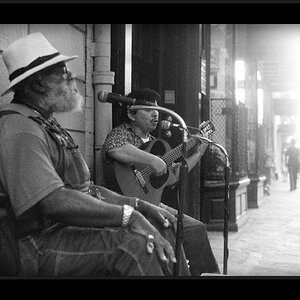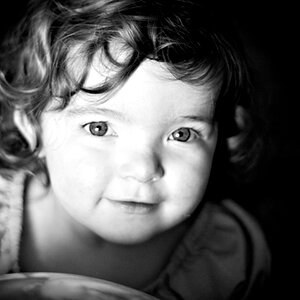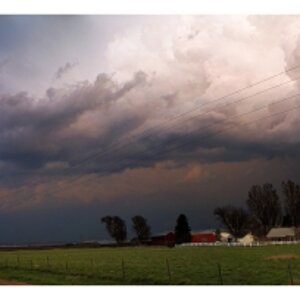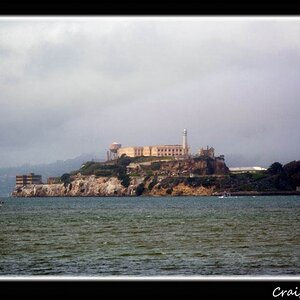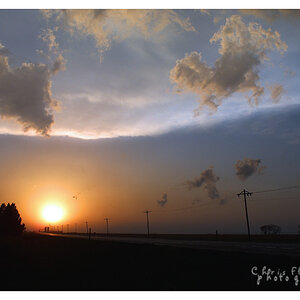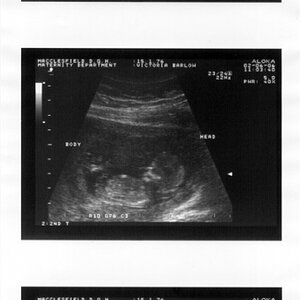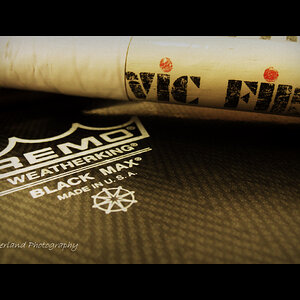- Joined
- Apr 9, 2009
- Messages
- 41,401
- Reaction score
- 5,706
- Location
- Iowa
- Website
- kharrodphotography.blogspot.com
- Can others edit my Photos
- Photos OK to edit
Most photographers that visit TPF will be interested in assignment photography (retail photography - weddings, portraits, families, kids, high school seniors, etc.).
Assignment photography usually only has value to the people in the images or to their immediate family.
Like all other photographers the retail photographer ultimately sell use licensing.
A retail photographer’s use license usually grants non-exclusive, non-commercial, personal use only usage rights that may include the print reproduction rights to images that are provided to the customer as digital image files on a CD/DVD.
Editing and entering images in contests is usually a right retained exclusively by the photographer. How much use licensing the retail photographer will sell is speculative, the photographer doesn't know in advance how much the customer will buy.
For that reason most retail photographers charge an upfront fee for their time and talent in case the customer doesn’t purchase any use licensing.
Many retail photographers call the upfront fee a sitting, or session fee. Commercial photographers usually call it a creative fee.
There are almost as many retail photography pricing models as there are retail photographers.
Some offer ‘packages’, some have minimum purchase requirements, some include a ‘print credit’ as part of their creative fee, some sell poses, some include a disc of digital image files in the creative fee, some require a minimum purchase as qualification to purchase a disc of digital image files. All of those pricing models, and many others work, if marketed, promoted, and sold effectively.
The key to any retail photography pricing model is the understanding that the customer cannot get images made by you anywhere else.
Yes, the customer can walk into any one-hour print lab and buy a small print for $0.19 or so. But the customer has to already have an image the lab can print. The lab doesn’t sell images. The lab sells paper, ink and the use of their printing service. The customer has to make their own images, or have someone else make images for them. Hopefully that someone else is you, and the customer wants you to handle having the images reproduced, either as prints - or prepared for printing as digital image files.
In other words, the value of your images is essentially the same if reproduced as prints or digital image files. No doubt it is easier to justify a higher price for a 20” x 30” size print, than it is to justify the price of 4” x 6” print, or a digital file that can be printed numerous times and at a variety of sizes.
I would submit that a digital image file is in fact worth substantially more than even a large print because it can be printed numerous times and at a variety of sizes.
If you noticed, in PBB 1, I underlined every instance of the words use, or usage.
Pricing, the reason for having a photography business, comes down to usage. The more usage the customer wants the more your images should cost, and digital image files on a disc allow the customer the most use.
The task the photographer then has is a sales task - selling the pricing model to the customer and justifying that the images you made are well worth what you charge.
Assignment photography usually only has value to the people in the images or to their immediate family.
Like all other photographers the retail photographer ultimately sell use licensing.
A retail photographer’s use license usually grants non-exclusive, non-commercial, personal use only usage rights that may include the print reproduction rights to images that are provided to the customer as digital image files on a CD/DVD.
Editing and entering images in contests is usually a right retained exclusively by the photographer. How much use licensing the retail photographer will sell is speculative, the photographer doesn't know in advance how much the customer will buy.
For that reason most retail photographers charge an upfront fee for their time and talent in case the customer doesn’t purchase any use licensing.
Many retail photographers call the upfront fee a sitting, or session fee. Commercial photographers usually call it a creative fee.
There are almost as many retail photography pricing models as there are retail photographers.
Some offer ‘packages’, some have minimum purchase requirements, some include a ‘print credit’ as part of their creative fee, some sell poses, some include a disc of digital image files in the creative fee, some require a minimum purchase as qualification to purchase a disc of digital image files. All of those pricing models, and many others work, if marketed, promoted, and sold effectively.
The key to any retail photography pricing model is the understanding that the customer cannot get images made by you anywhere else.
Yes, the customer can walk into any one-hour print lab and buy a small print for $0.19 or so. But the customer has to already have an image the lab can print. The lab doesn’t sell images. The lab sells paper, ink and the use of their printing service. The customer has to make their own images, or have someone else make images for them. Hopefully that someone else is you, and the customer wants you to handle having the images reproduced, either as prints - or prepared for printing as digital image files.
In other words, the value of your images is essentially the same if reproduced as prints or digital image files. No doubt it is easier to justify a higher price for a 20” x 30” size print, than it is to justify the price of 4” x 6” print, or a digital file that can be printed numerous times and at a variety of sizes.
I would submit that a digital image file is in fact worth substantially more than even a large print because it can be printed numerous times and at a variety of sizes.
If you noticed, in PBB 1, I underlined every instance of the words use, or usage.
Pricing, the reason for having a photography business, comes down to usage. The more usage the customer wants the more your images should cost, and digital image files on a disc allow the customer the most use.
The task the photographer then has is a sales task - selling the pricing model to the customer and justifying that the images you made are well worth what you charge.


